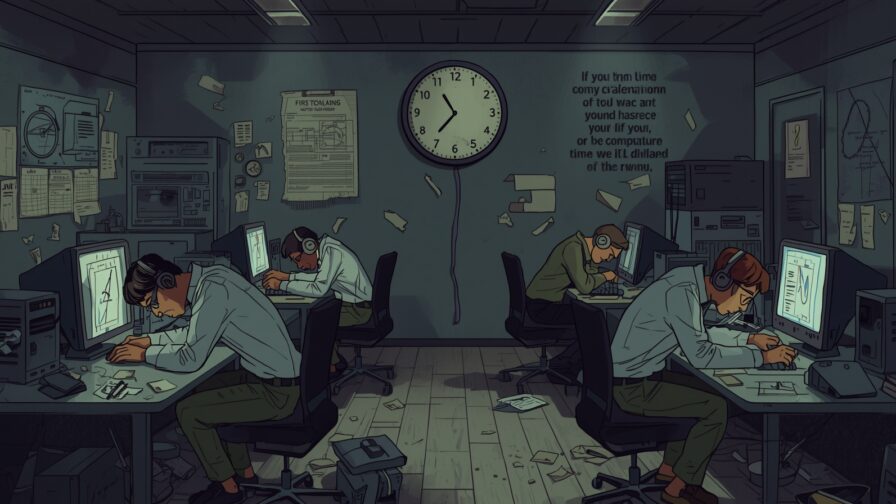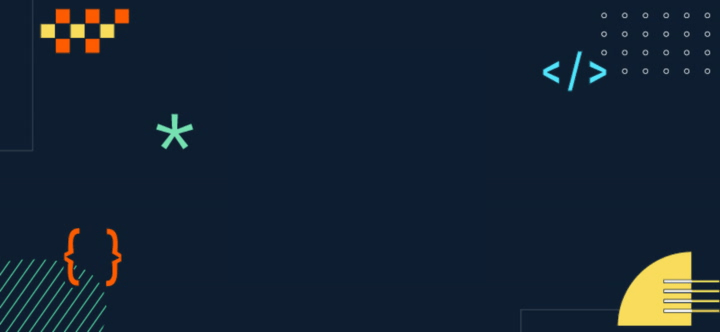
During the scorching August days, I found myself chatting with a childhood friend.
We both work in IT: me at technical tables, where people get angry over a misplaced bit, and him at commercial tables, where they try to sell ideas that a mass of nerds spawn endlessly.
Different backgrounds, parallel ways of seeing life and work, but with many similarities when it comes to failures and successes.
The reflection we started over a cappuccino and croissant quickly transformed into an analysis of the dynamics that lead to the failure of tech startups.
Guido, I hope you’ll forgive me if I borrow some of your insights for writing this article.
Welcome to the Slaughterhouse of Good Intentions
According to some studies, 90% of startups are destined to fail.
You can find a bleak statistic on explodingtopics, but it’s not the only place on the web where you can find this discouraging statistic.
Saying that 90% fail is a polite way to describe a graveyard of ambitions, a massacre of good technological intentions: “I’ll start dieting in September” is the parallel of “I’ll start a startup that will change the world in September.”
The truth, the one nobody dares to say out loud, is that most of these “startups” were never real companies. They were lab experiments, expensive tech hobbies disguised as businesses, led by coding geniuses who had no clue how to build a business.
Our startup won a hackathonThe most experienced investors now exclaim “who gives a damn” to these kinds of statements, since these “awards” mask the most common, most predictable, and least discussed cause of death: the suicidal absence of commercial acumen. Having a spitting contest at a tech event doesn’t mean having a sustainable business model.
A startup founded and led exclusively by techies isn’t simply destined to fail; it’s already dead from the start. Its failure isn’t a question of if, but of when the investors’ money or the founders’ patience will run out. You need strategy, you need a commercial soul, you need a real and not fictitious need—aspects that most of the time aren’t remotely in a techie’s wheelhouse, who thinks more about their code’s speed than listening to what the market is screaming at them.
In a recent interview, Enrico Pandian recalled the 2-week strategy: “If you can’t validate your idea in 2 weeks, you’re probably building a castle in the sand.”
For those who want to delve deeper into Pandian’s thinking, I suggest this interview where the concept of rapid validation is well explained.
Anatomy of a Predicted Failure: The Deadly Plague of “Tech-Only” Startups
Let’s start from the basic concept using the analysis from CB Insights, partially adopted by many associations like the Verona Agrifood Innovation Hub: startups die from “absence of market need” or “running out of funds.”
When these analyses are done, politically correct jargon is used, attempting to obscure the true nature of the problem. Here we don’t have these constraints and can assert without filters that it’s not the market that’s absent: it’s the founder who didn’t bother to look for it. Funds don’t “run out” by magic: they’re burned by disastrous strategic decisions. If until yesterday you spent your day lining up bits, you can’t wake up and magically become the wizard of business strategy.
Being Irrelevant (No Market Need): Creating Solutions Nobody Needs
This fierce evidence manifested brutally in the blockchain world: hundreds of solutions that provided guarantees nobody felt the need for, except the people who had built the startup.
Ideas that arrived too early or too late? We’ll never know, but what we do know is that these are ideas that interest few people and not the vast audience they were targeting.
In the AI world we’re in the same situation: an infinite number of products, now too similar. This time though we have the advantage that the average person has the clear feeling that these are tools capable of increasing their value, and where there’s perception of value there can be market.
The absence of market need is the number one cause of death: an impressive percentage of startups, whose numbers hover around 40%, is the tangible sign that you can have brilliant ideas, which in most cases are brilliant only inside our computer and not in people’s heads.
This isn’t an accident; it’s premeditated murder of one’s own idea, perpetrated by founders in love with their technological solution but completely uninterested in the problem it should solve.
This phenomenon, known as “tech-solutionism,” is the occupational disease of technical teams. They are trained to solve complex puzzles and create elegant architectures; they are not trained to leave the office to verify if anyone, in the real world, cares about their creation.
An enlightening academic research published on PubMed Why do startups fail? A core competency deficit model analyzed dozens of documents written by CEOs of failed startups to identify the most lethal skill deficits.
The results are staggering: the two skills whose absence was most closely correlated with failure were “information-seeking” and “customer service orientation.”
If you’re programmers, software engineers, or technicians, you might have an idea of what these skills are, but you certainly haven’t dedicated much time to refining them.
Seeking information implies actively validating market hypotheses, while customer orientation means prioritizing user needs over technological purity: whether a software flow is optimized matters to a customer as much as knowing if your kitchen color is red or yellow. If instead the “delivery address” field is missing (or doesn’t work): yes, this is indeed a major flaw in your software solution.
A team composed exclusively of techies is, by its very nature, structurally deficient in these vital areas. Therefore, “No Market Need” isn’t a market failure; it’s a direct and unequivocal failure of the team to perform the most basic commercial functions.
A homogeneous team is destined to build brilliant but perfectly useless products, because nobody within it has the task, competence, or incentive to ask the simplest and most important question of all: “Who needs this?”
For TV series fans, I recommend Silicon Valley which beautifully synthesizes this dynamic.
Running Out of Cash but Being Full of Code
Running out of funds is the second most cited cause of death. We’re talking about estimates around 30-35%.
Running out of money is an elegant way to say that startups weren’t able to generate new money.
In 1999 Jeff Bezos was interviewed and asked: “Your company is worth billions, but every time I look at the balance sheet I see it’s losing money: your company has never made a profit” and Jeff serenely responds “That’s true, but we’re investing to grow.”
If the company invoices and grows every year, losing money isn’t a problem—you’ll always find an investor. If the pennies entrusted to you don’t produce any kind of result, the problem is deeper and you’re destined to drain all your funds and close or be absorbed by someone who can get your business started, but your hyper-technical mind isn’t capable of doing it.
The invisible killer of startups is a mathematical equation completely unknown to techies:
CAC > CTLVThe customer acquisition cost (Customer Acquisition Cost) is higher than the value that customer will generate over time (Customer Transactional Lifetime Value).
A team of only techies can be obsessed with product metrics like server uptime, latency, or loading speed, but completely ignore the business metrics that determine the company’s life or death.
The inability to manage cash flow is a direct consequence of this financial illiteracy. Technical founders, driven by the desire to create the “perfect” product, continue to invest resources in development, hiring more engineers and adding features, without a corresponding strategy to generate revenue.
In my distant past, I remember a conversation with a French company that produced a library for Clipper whose name now escapes me. They had landed a huge contract that allowed the company a positive explosion: hiring, expanding their offering, and profits.
How was this contract born? The sales department had sensed a great opportunity in selling software to a client. That software didn’t exist when it was requested: in one afternoon they drew some product screenshots with “PAINT,” saying it existed but needed 6 months to configure it at the client’s site, given the project’s complexity.
Good: the client was convinced, signed the contract, and in 6 months they moved the entire project team to realize that application that didn’t exist, but which the client was convinced was ready.
Now imagine a purely technical approach to the same problem:
we don't have the application, but we can make it in 6 monthsThe technical result would be identical, but this phrase, in a client’s mind, leaves the feeling that you might not succeed; saying you already have it but need to customize it generates a completely different perception of control.
Along the same lines, there’s an interview circulating online with Claudio Cecchetto who, after listening to the cassette of “Hanno ucciso l’uomo ragno,” asked 883: “There are only 5 tracks, do you have 2 more?” and they said: “yes, they’re in the studio, let’s go get them and bring them.”
In reality they didn’t exist: they locked themselves in a room for two days and came out with two more songs.
Saying “we don’t have anything, but we can make them in 2 days” would have conveyed uncertainty and perhaps wouldn’t have created the opportunity they managed to seize.
But a techie would never have said something like that: to say it required someone who, deep down, was more of an entrepreneur than a technician.
What is genius? As Perozzi said:
Fantasy, intuition, decision and speed of executionThe Plague of Invisibility (Poor Marketing)
If from some points of view the invisibility cloak is a significant advantage, Harry Potter knows this well from the countless times he wore it, but if you have a company: having a product that nobody knows about isn’t something to boast about.
14% of startups fail from this dark evil. If you follow the mantra: “if you build it, they will come,” you’re destined to present your product only in the living rooms of other nerds like you.
Technical founders often harbor deep contempt for marketing, considering it “fluff,” dishonest manipulation, or, at best, a secondary activity to do “later” when the product is perfect. No: this is a death sentence. The perfect product doesn’t exist. Think of many tools you started using: the first versions were extremely limited, yet you hooked onto them immediately, following them at stalking level.
According to Peter Thiel, co-founder of PayPal:
The number one cause of company failure is poor distribution, not the productDon’t be afraid to make your product known, to ally with those who have a distribution chain, a sales force, powerful marketing: they’re the ones who will give you the possibility to expand, not your product.
The inability to do marketing isn’t a simple skill gap: it’s a cultural prejudice, an ideological blind spot. In failure analysis, a recurring theme emerges: the inability to do marketing was a function of founders who liked programming or building products but didn’t like the idea of promoting them.
Wrong Team (Not the Right Team)
Having the “wrong team” is one of the main causes of failure, responsible for closing almost a quarter of startups.
Having a wrong team doesn’t mean a team of incompetent people, but a team that’s too homogeneous: imagine a soccer match with a team made up of only forwards: all phenomenal, but unable to counter the opposing team. Defeat becomes an inevitable element.
The real problem, almost always, is the lack of a co-founder with commercial DNA: if you’re a team of only programmers, one of you must throw away the keyboard, or better yet you need to find a NON-programmer, someone who can’t write a “Hello World” (not even with ChatGPT) but can sell refrigerators to Eskimos.
One of the friend companies I’ve seen grow the most is composed of a brilliant technical mind and a commercial person with great market vision, whose union created a winning balance.

Case Study: Stripe – The Programmers Who Learned to Sell
At first glance, Stripe seems like the exception that proves the rule. Founded by two Irish brothers, Patrick and John Collison, both programming prodigies, it’s a company built by techies for other techies (developers).
But if we don’t stop at this crude analysis, we discover that their success doesn’t contradict our thesis, but reinforces it even more powerfully.
The Collison brothers didn’t succeed despite being techies; they succeeded because they combined their technical genius with exceptional commercial and strategic ability.
They understood they had to actively sell it. Their initial go-to-market strategy, now legendary and known as the “Collison Installation,” is a masterpiece of founder-led sales.
When they met a potential customer, they didn’t give them a PowerPoint presentation. They asked for their laptop, and in a few minutes, before their eyes, they integrated Stripe into their product.
Instead of talking about value, they demonstrated it unequivocally.
Stop Writing Code, Start Selling
Being a good programmer isn’t enough, knowing how to produce solutions isn’t enough—you need a marketing soul, a sales soul that doesn’t have its roots in a programming language, but in different experiences and studies.
The greatest salesperson I’ve known was a summer village entertainer: he had great empathy and likability. He made you talk, understood your needs, and knew how to persuade you.
If you’re a group of programmers, look for someone like that, who brutally breaks out of your patterns, who knows how to enhance your products and talk to people. Look for someone with a sales network who knows how to channel what you’re building. At that point the road becomes downhill and above all you’ll have a broader team, capable of better facing market challenges.

A programmer doesn’t need a clone, they need a partner. You need to talk with potential customers and understand what they’re looking for. You don’t need to write code if we don’t know which direction to go: better to lose days talking than days writing code we’ll then throw away because it doesn’t satisfy any requirements.
The world is full of elegant code. What’s scarce are companies capable of transforming that code into real value for their customers.
Stop hiding behind your text editor. Get out and sell. It’s the only way to not end up in the graveyard of geniuses.

